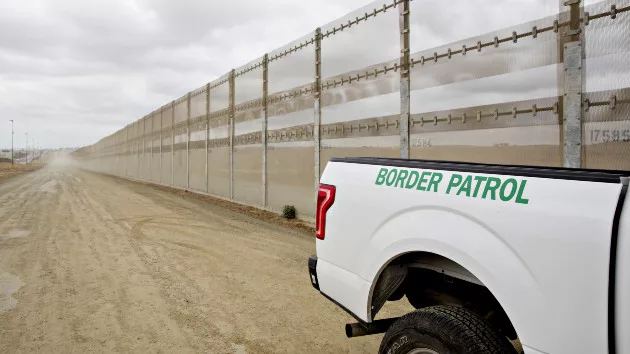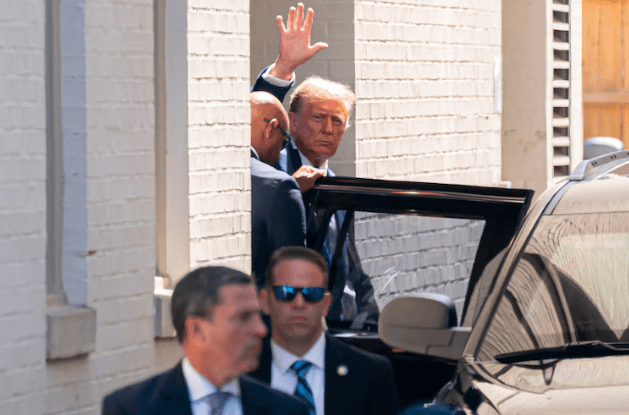(WASHINGTON) — He said he would do it in his first term.
Now, with immigration a top issue for voters in November, Donald Trump says, if elected again, he’s determined to carry out his threat: to round up and deport millions of migrants living in the U.S. without legal permission.
To do so, the former president said he would use local law enforcement and the National Guard to find such migrants living across the U.S. He also hasn’t ruled out building detention camps on U.S. soil or activating the military as part of the effort.
“On Day 1 of my new administration, I will seal the border, stop the invasion of people pouring through our border and send Joe Biden’s illegal aliens back home where they belong,” Trump said at a recent rally in Wildwood, New Jersey. “They have got to be sent home.”
It’s a proposal immigration experts and advocates say is extreme, and would have major consequences if implemented.
“It’s going to be a mess and it’s going to be a nightmare,” David Leopold, a former president of the American Immigration Lawyers Association, told ABC News. “There is no economic or social rationale for it other than a hateful ideology.”
There are about 11 million unauthorized migrants living in the U.S., according to the most recent estimates from the Department of Homeland Security. The overwhelming majority of the population (79%) have been in the country since before 2010, DHS found — though the report contains numbers through 2022, before the historic influx in border crossings.
Data from the immigration advocacy group FWD.us found that 22 million people in the U.S. live in a mixed-status household where at least one undocumented person lives with U.S. citizens, green card holders or other lawful residents.
“These policies will touch every single American,” said Kica Matos, the president of the National Immigration Law Center.
“We’re talking about broken communities, families being separated, racial profiling, the trampling of our Constitution, an economic impact — not to mention the diplomatic and the logistical challenges that this agenda will have on our nation,” she told ABC News.
The National Immigration Law Center challenged previous Trump policies, like those that resulted in family separation at the border and efforts to ban immigrants from Muslim countries and to end Deferred Action for Childhood Arrivals (DACA). Matos said their team has been strategizing since the start of the year in anticipation of a “possible Trump 2.0” to challenge any mass deportation plan he may try to enact.
The last time there was a mass deportation of migrants in the U.S. was in the 1950s under President Dwight D. Eisenhower, who expelled roughly one million Mexican undocumented immigrants, many of whom were temporary or seasonal workers, on trains, buses and cargo ships. Trump has pointed to Eisenhower’s aggressive actions — dubbed at the time using the slur “Operation Wetback” and later criticized as inhumane — as a model for his pledge.
But in addition to legal roadblocks, any mass removal effort would face huge logistical hurdles: limited detention space, thousands of enforcement personnel needed and heavy case backlogs.
“The overall capacity is nowhere near what would be necessary to carry out the plans as they’ve been detailed today,” said Jorge Loweree, the managing director of programs and strategy at the American Immigration Council.
“I think people just do not understand how labor intensive this process is, especially in a country of our size and a country of our diversity,” said Muzaffar Chishti, a senior fellow at the nonpartisan Migration Policy Institute. “That it’s almost impossible to spot an unauthorized worker in the mixed communities that we have and that it takes a lot of personnel resources even to execute a warrant against a single person.”
“So given all those constraints, people will soon understand that’s easier said than done,” Chishti said. “It’s clearly used for political purposes and we may not hear it again after the election.”
In fact, Trump similarly pledged a mass deportation of undocumented migrants during his 2016 campaign and it was never carried out.
This cycle, Trump has ratcheted up his rhetoric against immigrants. He’s gone so far as to suggest migrants are “poisoning the blood of our country” and, without evidence, to claim they are largely coming from “prisons, jails, mental institutions, from insane asylums.” In addition to mass deportations, he’s also suggested ending birthright citizenship (a right to citizenship for children born in the U.S. to parents living in the country illegally that is currently guaranteed by the 14th Amendment) and reimposing travel bans.
Some observers worry Trump would go further in executing his anti-immigrant agenda if granted another four years as commander-in-chief.
Trump’s vowed to expand executive authority and install public servants loyal to him and his vision. And while the courts were a major backstop during his first administration, Trump reshaped the federal judiciary by appointing hundreds of judges and several Supreme Court justices.
Plus, it appears he now has more buy-in from Republicans on Capitol Hill. Sen. Marco Rubio, a Florida Republican who was once a champion of immigration reform, recently reversed his stance to support Trump’s deportation plan.
“I think they learned some hard lessons in the first term about the agencies and about the courts, and how some of their schemes can be slow walked,” Leopold said of Trump’s team. “So, I think they will be going into the second term with a lot more knowledge and how to actually run the government and implement their plans.”
Copyright © 2024, ABC Audio. All rights reserved.






